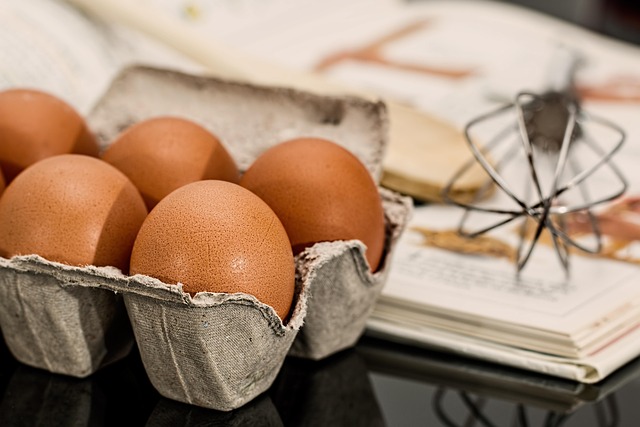Use conversion factors to update ingredient amounts quickly
Quickly adjusting ingredients in a recipe saves time and reduces waste. This article explains how conversion factors help you change portion sizes, scale batches, and update nutrition estimates without guesswork. Learn practical steps for converting measurements, handling grams and ounces, accounting for density when moving between weight and volume, and keeping calories and macronutrients consistent when you change servings.

Updating ingredient amounts often feels like math homework, but conversion factors make the process predictable and repeatable. Whether you want to halve a recipe for a smaller portion or scale a dish up to feed a crowd, systematic conversions of measurements—grams to ounces, volume to weight, and serving counts—allow you to adjust quantities accurately. This opening overview outlines why conversions matter and how a simple calculator or set of rules can save time while preserving recipe balance and nutrition.
This article is for informational purposes only and should not be considered medical advice. Please consult a qualified healthcare professional for personalized guidance and treatment.
How do conversions affect servings and portion sizes?
Adjusting servings and portion sizes starts with a clear baseline: how many servings does the original recipe yield, and what is your target servings or portion? Use a scaling factor calculated as target servings divided by original servings. Multiply each ingredient amount by that scaling factor to maintain ratios across the recipe. For portion-controlled cooking—where calories or nutrition per portion matter—apply the same factor to nutrient totals so that calories and macronutrients per portion remain consistent. Keep notes about whether a “serving” is a plated portion or a unit (slice, cup) to avoid confusion.
How to convert grams and ounces in recipes
Conversions between grams and ounces are common when recipes mix metric and imperial measurements. A kilogram equals 1000 grams; one ounce equals 28.3495 grams. For practical kitchen use, round sensibly: 1 ounce ≈ 28.35 g, 100 g ≈ 3.53 oz. When updating ingredient amounts, convert everything into a single system first (typically grams for precision), scale, then convert back if needed. Using grams for dry and sticky ingredients helps maintain accuracy because volume measures can vary by how an ingredient is packed into a cup.
How to scale recipes for batch, yield, and adjustments
Scaling a recipe for a larger batch requires more than multiplying quantities. Consider yield changes—will the same cookware, oven space, or mixing capacity produce the same result? Multiply ingredient amounts by the scaling factor to get new quantities, and adjust cooking time or temperature as recipes don’t always scale linearly. Some ingredients, like spices, leavening agents, and salt, may require slightly less proportional increase to avoid overpowering a dish. Note adjustments in a testing batch so you can refine the scaling rules for consistent results.
How to estimate calories and macronutrients after changes
When you change ingredient amounts, the total calories and macronutrients change in direct proportion to the scaling factor. Convert ingredient weights to grams, multiply by the nutrition values per 100 g (or per gram) for each ingredient, sum totals for calories, protein, fat, and carbohydrates, then divide by the new number of servings to get per-serving values. Keep nutrition labels or a reliable database handy to source macronutrient and calorie values. For portion tracking, label each serving with calories and macronutrient breakdown so portion control and dietary planning remain accurate.
When density matters: converting between volume and weight
Some conversions require density—when you convert from cups to grams, for example. One cup of flour does not weigh the same as one cup of sugar. Density tables or ingredient-specific conversion charts are essential for these cases. When using a calculator, include a density field (g per ml) or use established approximations for common items (e.g., water: 1 ml = 1 g). For complex mixtures or processed ingredients, check product information or measure a sample to determine weight per cup. Accurate density-based conversion reduces variance in texture and baking chemistry.
Practical tips for measurements, conversion accuracy, and kitchen workflow
Use digital scales and standardized measuring tools to minimize error. Convert to a single unit (preferably grams) before scaling, then round amounts to usable kitchen increments. Keep a conversion reference for common ingredients, and document adjustments to improve future scaling. When scaling for dietary needs, recalculate calories and macronutrients and record changes per portion for consistency. Batch cooking benefits from pre-testing scaled recipes in smaller increments to identify any flavor, texture, or timing changes that scaling introduces.
Conclusion
Conversion factors simplify recipe adjustments by turning subjective estimations into consistent calculations. Converting measurements into a single unit, applying a clear scaling factor, accounting for density when moving between volume and weight, and recalculating nutrition per portion help maintain recipe quality and predictable yields. With a few reference charts and a reliable scale or calculator, updating ingredient amounts becomes a routine part of efficient cooking and accurate nutrition tracking.




